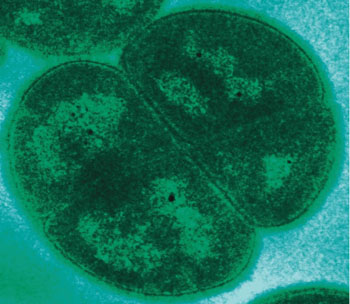Synthetic Antioxidant Peptide Protects Mice from Lethal Levels of Radiation
By LabMedica International staff writers
Posted on 18 Aug 2016
An antioxidant peptide compound that mimics those produced by the bacterium Deinococcus radiodurans was found to effectively protect cell cultures and mice exposed to lethal levels of gamma radiation.Posted on 18 Aug 2016
D. radiodurans is a rather large, spherical bacterium, with a diameter of 1.5 to 3.5 microns. Four cells normally stick together, forming a tetrad. The bacteria are easily cultured and do not appear to cause disease. Colonies are smooth, convex, and pink to red in color. The cells stain Gram-positive, although its cell envelope is unusual and is reminiscent of the cell walls of Gram-negative bacteria. D. radiodurans does not form endospores and is nonmotile. It uses oxygen to derive energy from organic compounds in its environment, and is often found in habitats rich in organic materials, such as soil, feces, meat, or sewage, but has also been isolated from dried foods, room dust, medical instruments, and textiles.

Image: A transmission electron microgragh (TEM) of Deinococcus radiodurans (Photo courtesy of Dr. Michael Daly, Uniformed Services University of the Health Sciences).
D. radiodurans has a unique quality in that it can repair both single- and double-stranded DNA. When damage is apparent to the cell, it brings it into a compartmental ring-like structure, where the DNA is repaired and then is able to fuse the nucleoids from the outside of the compartment with the damaged DNA. This enables the bacterium to be extremely resistant to ionizing radiation, ultraviolet light, desiccation, and oxidizing and electrophilic agents.
Investigators at the Uniformed Services University of the Health Sciences (Bethesda, MD, USA) worked with a synthetic manganese (Mn)-2+-decapeptide complex (MDP), based on the Mn antioxidants found in D. radiodurans. MDP was previously reported to be extraordinarily radioprotective of proteins in the setting of vaccine development. The peptide-component of MDP used in this study was selected from a group of synthetic peptides screened in vitro for their ability to protect cultured human cells and purified enzymes from extreme damage caused by ionizing radiation (IR).
The investigators reported in the August 8, 2016, online edition of the journal PLOS ONE that MDP accumulated in Jurkat T-cells and protected them from 100 Gy (gray) of ionizing radiation. MDP preserved the activity of T4 DNA ligase exposed to 60,000 Gy. In vivo, MDP was nontoxic and protected B6D2F1/J (female) mice from acute radiation syndrome. All irradiated mice treated with MDP survived exposure to 9.5 Gy in comparison to untreated mice, which displayed 63% lethality after 30 days. These results showed that MDP provided early protection of white blood cells, and attenuated IR-induced damage to bone marrow and hematopoietic stem cells.
"D. radiodurans has taught us – if you want to survive radiation: protect your proteins," said contributing author Dr. Michael Daly, professor of pathology at the Uniformed Services University of the Health Sciences. "Past research has shown that Deinococcus bacteria accumulate high concentrations of manganese (a metal element similar to iron) and peptides. The secret, it seems lies in its ability to protect its proteins – the “machines” of the cell – from radiation damage. And, the unusual protein-protecting antioxidants accumulated in Deinococcus cells are readily synthesized in the laboratory. Such Deinococcus antioxidants now have been shown to be highly protective of mice exposed to lethal doses of gamma rays."
"Imagine being able to take a pill that would protect you from radiation," said Dr. Daly. "Our study is the first to demonstrate that these antioxidants are safe and can protect animals from radiation injury and death. These results open the door to all kinds of possibilities in the development of radioprotective pharmaceuticals."
Related Links:
Uniformed Services University of the Health Sciences








 (3) (1).png)




